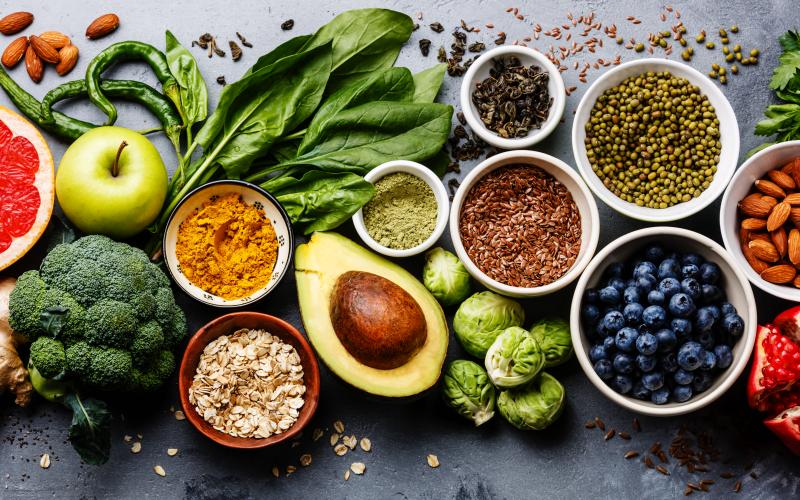What is Gluten?
Gluten is a protein found primarily in wheat, barley, and rye. Gluten can also be found in derivative of wheat, barley, and rye grains.
Celiac Disease
Celiac disease is an autoimmune condition, where an immune response is directed against one’s own body rather than against foreign substances such as viruses or bacteria. Celiac disease can only develop in those with certain genes. Thirty percent of the population carries these genes. If one does not have these genes, celiac disease cannot develop, but only a small percentage of those with the genes develop celiac disease. In those with celiac disease, gluten causes an immune inflammation in the small intestine. Left untreated, celiac disease may lead to non-intestinal symptoms including anemia, chronic fatigue, osteoporosis, impaired spleen, infertility, neurologic disorders, skin rashes, and cancer. Those diagnosed with celiac disease need to completely and permanently avoid any form of gluten in their diets.
Non-Celiac Gluten Sensitivity
Some individuals have symptoms of celiac disease but their blood tests and endoscopies are negative or normal. This condition has been called non-celiac gluten sensitivity (NCGS). The symptoms may be similar to celiac disease including abdominal pain, bloating, gas, diarrhea, foggy mind, lethargy or fatigue. Symptoms improve when gluten is eliminated from the diet and return when gluten containing foods are reintroduced. NCGS is not thought to be an autoimmune disease and is not associated with complications of celiac disease. It is important to note that Celiac disease and NCGS are different from a food allergy.
Allergy
A food allergy is a misguided reaction to foreign substances by the immune system, the body system of defense against foreign invaders, particularly pathogens. The allergic reaction is misguided in that these foreign substances are usually harmless. The substances that trigger the allergy are called allergens and can include food. Allergens cause the production of immunoglobulin E (IgE), an antibody that all of us have in small amounts. Allergic persons, however, produce IgE in abnormally quantities. Normally, this antibody is protecting us from other harmful organisms, but not from allergens. During the sensitization period in allergy, IgE is overproduced. It coasts certain potentially explosive cells that contain chemicals including histamine. These chemicals, in turn, cause inflammation and the typical allergic symptoms. This is how the immune system becomes misguided and primed to cause an allergic reaction when stimulated by an allergen.
FDA Gluten Free Definition and Regulations
While “gluten-free” is a voluntary claim that manufacturers may choose to use in the labeling of their foods, FDA’s gluten-free food labeling rule specifies what the claim actually means on a food label. Accordingly, manufacturers that label their foods as free of gluten are responsible for using the claim in an accurate and not misleading manner, and for complying with all requirements established by the regulation and enforced by FDA. The rule specifies, among other criteria, that any foods that carry the label “gluten-free,” “no glute,” “free of gluten,” or “without gluten” must contain less than 20 parts per million (ppm) of gluten. This level is the lowest that can be reliably detected in foods using scientifically validated analytical methods. Besides the limit of gluten to 20 ppm, the rule permits labeling a food “gluten-free, if the food does not contain:
- An ingredient that is any type of wheat, rye, barley, or crossbreeds of these grains.
- An ingredient derived from these grains that has not been processed to remove gluten, or
- An ingredient derived from these grains that has been processed to remove gluten, but results in the food containing more than 20 ppm of gluten.
Additionally, any unavoidable presence of gluten in a food bearing a “gluten-free” claim, whether manufactured to be gluten-free or inherently free of gluten, must be below 20 ppm gluten. This means that foods may not use the claim if they contain 20ppm or more gluten as a result of cross-contamination or cross-contact with gluten-containing grains or other gluten-containing products. The rule does not require you to use any specific method to determine a food’s gluten content. However, there are scientifically valid methods that can reliably detect the presence of 20 ppm gluten in a variety of foods, including both raw and cooked or baked products. Additionally, the rule does not require you to test for the presence of gluten in your starting ingredients or finished foods labeled “gluten-free.” However, you are responsible for ensuring that foods bearing a gluten-free claim meet the FDA requirements, including that any unavoidable gluten present in a food labeled glute-free is less than 20 ppm. It is encouraged by the FDA to use effective measures to ensure that any foods labeled as “gluten-free” comply with FDA requirements; such measures may include:
- Testing the ingredients to determine their gluten content;
- Requesting certificates of gluten analysis from ingredient suppliers; or
- Participating in a 3rd party gluten-free certification program.
The FDA would consider a food labeled “gluten-free” misbranded if its labeling:
- States “gluten-free”, but the food does not meet all of the FDA’s requirements for a “gluten-free” claim.
- States “no gluten,” “free of glute,” or “without gluten,” but the food does not meet all of the FDA’s requirements for a “gluten-free claim; or
- States both “gluten-free” and either the term “wheat” appears in the ingredient list or in a separate “Contains wheat” statement to meet FDA food allergen labeling requirements, but additional wording is absent that would clarify that the food still meets FDA requirements for a “gluten-free” claim. In such cases when both the terms “wheat” and “gluten-free” are declared on the same food label, the word “wheat” must be followed immediately by an asterisk or other symbol that reefers to this same asterisk or other symbol with the words, “The wheat has been processed to allow this food to meet the Food and Drug Administration (FDA) requirements for gluten-free foods.”
If you label your food as “gluten-free,” but it is not in compliance with the “gluten-free” regulation, such as its gluten content level is above 20 ppm, then it would be “misbranded” under the Federal Food, Drug, and Cosmetic Act, and FDA could take regulatory action.
There are no requirements for a processor to use a particular size, font, or placement on the finished product label when declaring “gluten-free”. If you decide to pursue a “gluten-free” claim, it is important that all efforts are made to be FDA compliant wherever your product is sold.
Document Sources:
- Celiac Disease, Non-Celiac Gluten Sensitivity, and Food Allergy: How Are They Different? American Academy of Allergy Asthma & Immunology. Web 21 Oct. 2019.
- Guidance for Industry Gluten-Free Labeling of Foods Small Entity Compliance Guide. Office of Nutrition, Labeling, and Dietary Supplements Food Labeling and Standards Center for Food Safety and Applied Nutrition Food and Drug Administration. Retrieved 10/21/2019.
- W. Shiel. Medicine Net. Medical Definition of Allergy. Web 21 Oct. 2019


